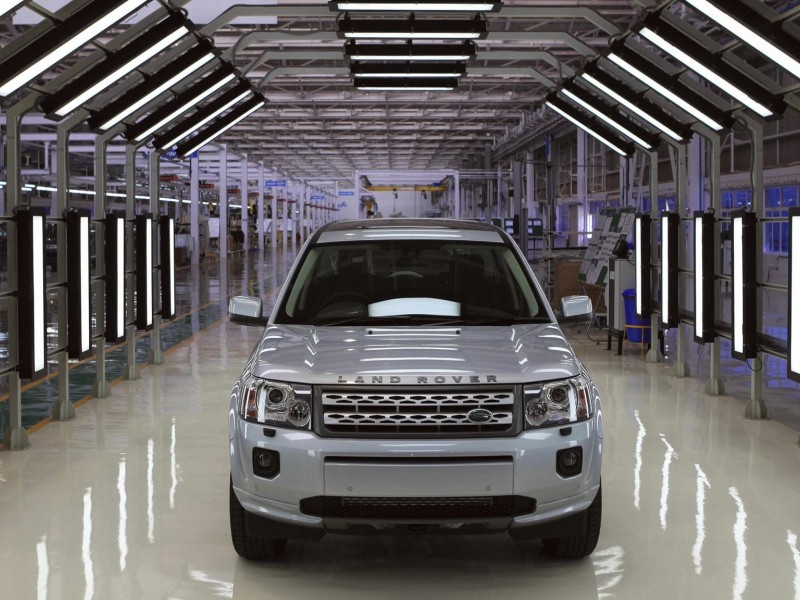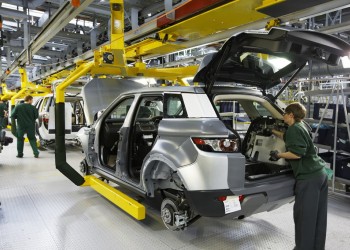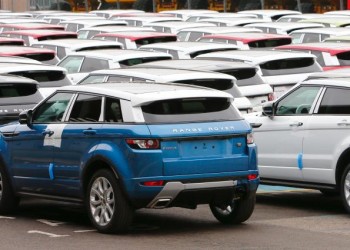Dwindling demand for diesel motors and the low performing Chinese market have taken a big chunk out of Jaguar’s Land Rover Revenue. JLR reports a £3.6 billion loss which is the biggest loss in the company’s history.
It seems that troubles are never ending for the Jaguar Land Rover. According to the JLR report, Britain’s largest carmaker lost £3.6 billion in revenue last year. Experts say that this came as a consequence of a downward revision of the JLR business value, problems in the Chinese market, and a significant decrease in diesel motor car sales.
India's Tata Motors, the owner of Jaguar Land Rover, directed attention to a positive trend in terms of profitability. In fact, JLR has recorded a £120m pre-tax profit in the fourth quarter of the financial year.
Unfortunately, this good performance in sales by the end of the year couldn’t compensate for the incredibly huge losses for the entire financial year, which starts in March one year and ends in March the next year. It appears that the write-down in the third quarter of the financial year contributes to the huge company losses.
The Write-Down In the Third Quarter
Some of you might not remember it, some maybe didn’t even hear about it, but as soon as JLR’s performance in the Chinese market started showing very poor numbers, the company took action. The famous British car brand decided to take a £3.1 billion write-down on the value of its investments.
The sales of JLR car have dramatically fallen during the last three months of 2018. During this period, JLR made a devastating £3.4bn pre-tax loss (£3.1 billion after taxes). This potentially led to a loss for the entire financial year for the first time in the last 10 years.
The problem started with JLR’s point of view on previous investments in machinery and property. As soon as the poor market reports came in, JLR accepted that these investments are worth significantly less than previously thought.
These properties and machinery were the targets of the first half of the £3.1 billion non-cash charges. The other half of the loss got attributed to the goodwill impairments. This is a regular accounting procedure - a correction that takes future earnings anticipating their significant decrease.
The Loss After The Exclusions
To reduce the final loss, JLR’s financial experts have excluded non-cash one-off items. The result was not satisfying. After the exclusions, Britain’s carmaker still had to deal with a pretax loss of £358. And this is just for one quarter. If we take a look at a whole picture, it becomes easy to spot the trend. In 2017, for instance, JLR revenues went down from £25.8 billion to £24.2 billion.
This came as the consequence of the fall in JLR cars global sales. To paint the picture for you, JLR experienced a decrease in car sales globally. The sales went down each year by approximately 6%. Last year, JLR sold 578,915 vehicles, which is considerably less than the year before and the year before that.
The Factors That Contributed to This Loss
We have already mentioned that the main factors held responsible for this unfortunate development for JLR are problems in the Chinese market, the ever decreasing demand in diesel motors, and the downward revision of JLR’s business value.
The performance in the Chinese market dropped dangerously low and JLR had to react to protect its interests and employees. Sales dropped by 34% in China due to various reasons.
The JLR chief commercial officer, Felix Bräutigam addressed this development with the words: “Customer demand in China, in particular, has struggled to recover following changes in import tariffs in July and intensifying competition on price, while ongoing global negotiations on potential trade agreements have dampened purchase considerations.”
Across the ocean, things have taken a turn to the better. The sales in the North American markets went up 8.1%. In the UK, the situation was somewhat similar and the sales went up 8.4%. But these profits were not enough to compensate for the loses in the Chinese market.
Jaguar Land Rover Efficiency Plans
JLR had to react in time to protects its interest. Soon after the above-mentioned developments, the company made its plans to cut 4,500 employees this year official. The SUV market is currently unpredictable and JLR’s plan is to consolidate over the course of next couple of months, assess the market, and devise a long-term strategy to ensure its success on a global scale.
It appears that not only is JLR affected by these developments, but other car manufacturers are struggling as well. As prof. Karel Williams, an automotive expert at Manchester Business School explained: “It’s hard to see how this can be resolved without some rationalization of the product range and without, in a sense, abandoning any aims to go for volume. The Chinese market is clearly a problem and in all their other markets they face increasing competition in the SUV segment. There is a business here but the size of the business, that remains to be seen.”
Meanwhile, the rumour about PSA taking over the JLR from Tata Motors also hit the shareholders and other concerned parties. Although both PSA and JLR officially made numerous references to this rumour, we could not hear a strong and resounding NO. It appears that both Tata Motors and the PSA Group are considering their options on the market.
The no-deal Brexit scenario is another relevant factor to consider here as already stated by the JLR officials. We could also see the unfortunate retraction of almost 50k JLR vehicles due to faulty CO2 emissions. These are quite a few unfortunate circumstances that JLR had to deal with.
Despite all of this, JLR remains focused on the future. Tata Motors announced its plans for future investments in all British JLR sites and how to get the company back on top. The focus is now on electric cars and battery packs.






0 comments